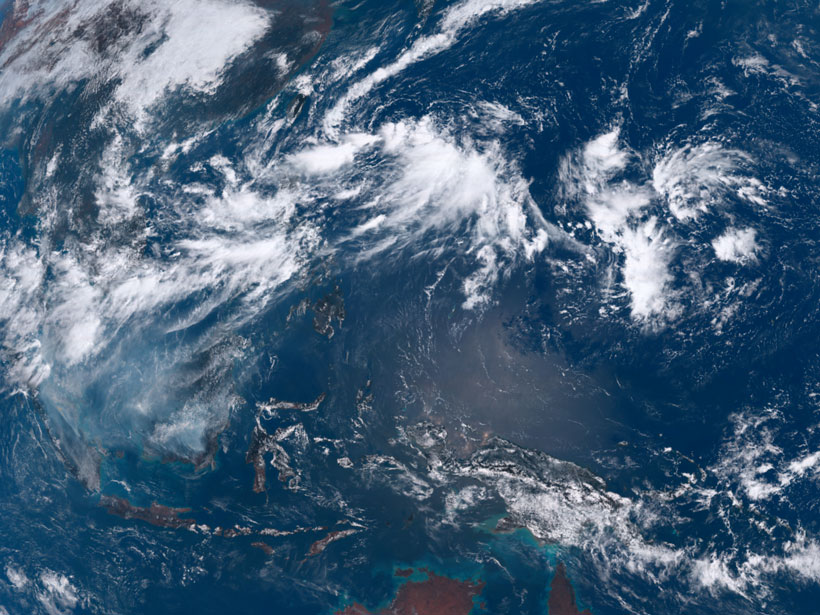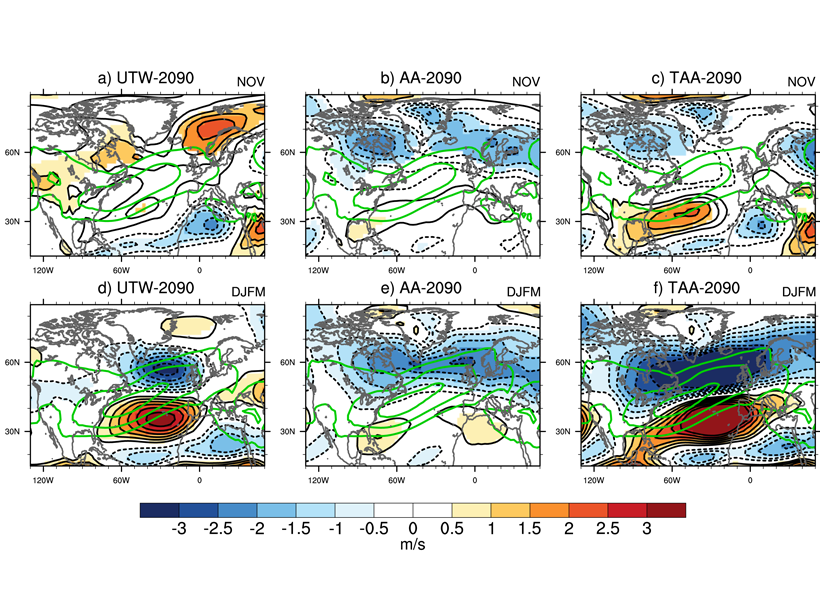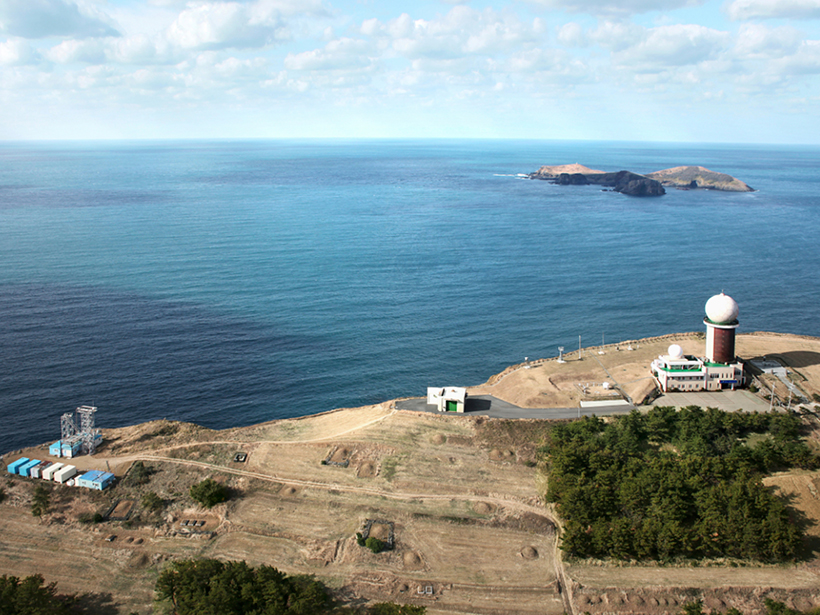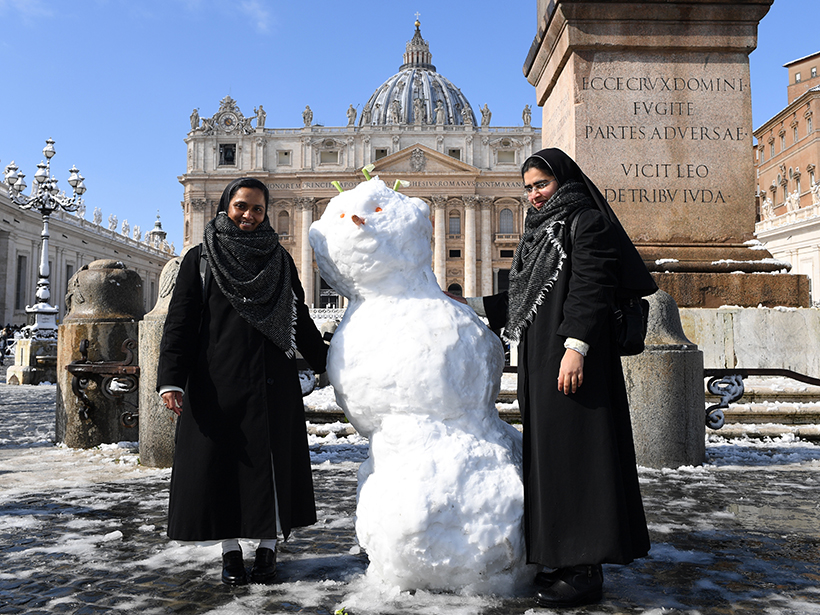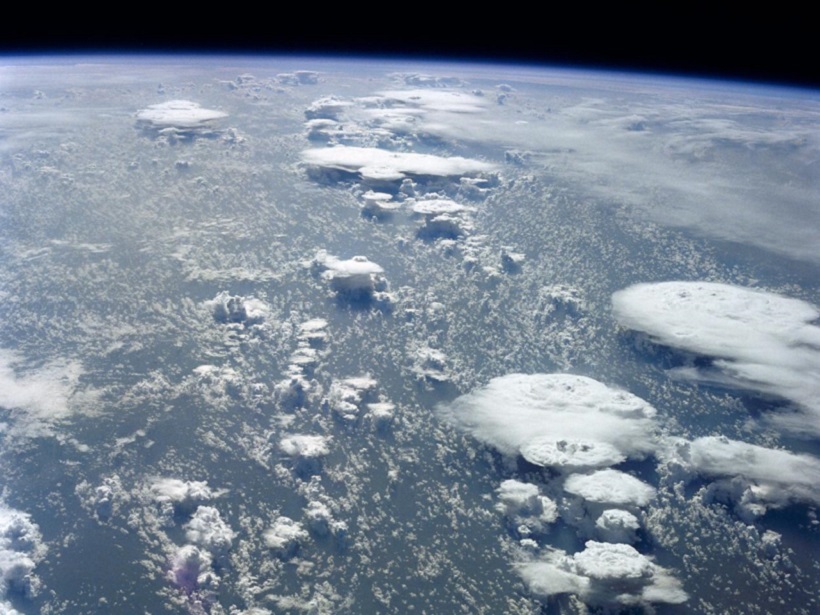Sudden stratospheric warmings in the high latitude wintertime can drive changes in light species (H, He and O) all the way though the thermosphere, likely influencing ion densities in the exosphere.
stratosphere
An Extraordinary Winter in the Polar North
An exceptionally strong stratospheric polar vortex coincided with a record-breaking Arctic Oscillation pattern and ozone destruction during the 2019–2020 winter season.
Warming in the Antarctic Stratosphere Affects Tropical Weather
Rapid temperature spikes in the stratosphere above Antarctica can influence weather and spark cyclones in the Northern Hemisphere’s tropics.
Satellite Measurements of Stratospheric Forest Fire Smoke
Intense boreal forest fires in August 2017 caused smoke plumes that reached record levels in the stratosphere; satellite measurements show that the effects rivaled a moderate volcanic eruption.
Polar Stratosphere Resolves North Atlantic Jet “Tug of War”
Getting the polar stratosphere right is critical in the simulation of North Atlantic climate change, which is shaped by the interaction of Arctic Amplification and tropical upper tropospheric warming.
Banned CFC Emissions Tracked to Eastern China
A new study indicates that better atmospheric monitoring networks are needed to enforce the Montreal Protocol.
Using Multiple Models to Improve Seasonal Forecasting
The first study to examine the ability of a suite of general circulation models to predict sudden warmings in Earth’s stratosphere highlights the potential for improving Northern Hemisphere forecasts.
Global Impacts of ENSO Reach into the Stratosphere
El Niño events have significant global impacts on weather and climate, but these reach up into the stratosphere, beyond the troposphere where most of Earth’s weather takes place.
Energetic Electrons Can Penetrate the Stratosphere
Precipitations of electrons with energies greater than 30 kiloelectron volts from the slot region penetrate at low altitude and can contribute to destroy ozone.
Dramatic Stratospheric Warmings Carved a Hole in the Ionosphere
A new study of sudden temperature spikes in Earth’s stratosphere could improve space weather forecasting.

![Two plots showing percent changes in TIME-GCM zonally averaged [O+] and [H+] as a function of latitude and altitude in the Northern Hemisphere between the “disturbed” and “pre-disturbance” time periods in 2012–2013](https://eos.org/wp-content/uploads/2020/12/2020JA028331-Figure-12-top-row-with-legend-sized-for-Eos.png)

